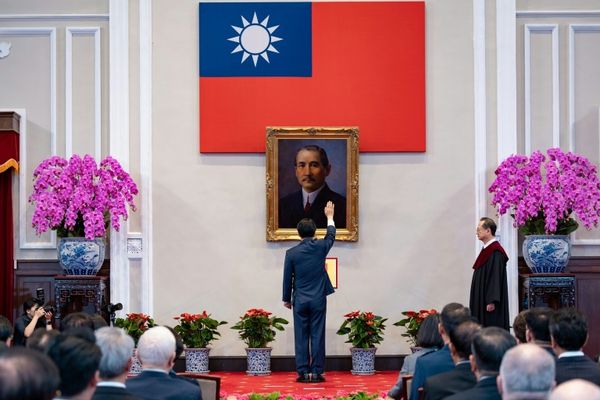“The land is so barren and the passes so high that only the best of friends and fiercest of enemies come by” — reads a Ladakhi saying at Kumar post on the Siachen Glacier located at an altitude of 15,632 feet. The saying captures the conflict on the icy glacier between India and Pakistan. April 13, 2024 marks four decades since the Indian Army pre-empted Pakistan and occupied the glacier on the Saltoro ridge, overlooking the Nubra valley in the Karakoram ranges. Extreme weather is the biggest enemy on the glacier. Around 1,150 soldiers have lost their lives, majority of them to the vagaries of extreme weather.
Conflicting claims
Siachen, in Balti language means “land of roses’ — ‘Sia’ is a kind of rose species that grows in the region and ‘Chen’ means “in abundance”. However, it is known for being the world’s highest and coldest battlefield. It sits at a very strategic location with Pakistan on the left and China on the right.
Siachen is a legacy of the Partition between India and Pakistan. While the Line of Control (LoC) was delineated and accepted by both sides upto NJ-9842 as part of the 1972 Simla agreement, the glacier itself was left unmarked. India claims the area based on the Jammu and Kashmir Accession Agreement of 1947 and the Karachi Agreement of 1949, which define the ceasefire line beyond NJ-9842 as running “Northwards to the glaciers”. On the other hand, Pakistan interprets it as ‘North-Eastwards’ to claim the area beyond the Saltoro Ridge and beyond Siachen as its own. This would give Pakistan direct connectivity to China as well as strategic oversight over the Ladakh region and the crucial Leh-Srinagar highway, posing a serious threat to India.
The genesis of Operation Meghdoot
In the 1970s and 1980s, Pakistan began allowing foreign mountaineering expeditions, resorting to cartographic aggression, to add credence to its claims. Following intelligence inputs of imminent military action by Pakistan in early 1984, India moved to pre-empt it.
Mountaineering expeditions led by Col. Narinder ‘Bull’ Kumar to the Siachen glacier and Saltoro range as Commandant of the High Altitude Warfare School (HAWS) in the early 1980s helped immensely in the planning process leading up to Operation Meghdoot. Based on these recce reports, the Indian Army launched ‘Operation Meghdoot’ on April 13, 1984 to capture the 76.4 km-long glacier. This was accomplished after a platoon of 4 Kumaon led by then Captain Sanjay Kulkarni (retired as Lt Gen) planted the Indian flag at Bilafond La at an altitude of 18,000 feet. Personnel from the Ladakh Scouts were also deployed via Cheetah helicopters by the Indian Air Force (IAF).
Although the operation began in 1984, IAF helicopters were already operating in the glacier with the first landing of a Cheetah helicopter in October 1978. Additionally, in preparation for the operation, IAF’s tactical and strategic airlifters, An-12s, An-32s and IL-76s transported stores and troops and air-dropped supplies to high altitude airfields, from where Mi-8, Mi-17, Cheetah and Chetak helicopters ferried men and material to the icy heights on the glacier, far above the limits helicopters were meant to be operated. Soon, about 300-odd troops were positioned on the strategically important peaks and passes of the glacier, the IAF recounted in a statement on Operation Meghdoot.
In June 1987, Indian troops captured the Quaid post at 21,153-feet under Operation Rajiv. The post was later renamed the Bana top, in honour of then Naib Subedar Bana Singh (later Subedar Major and Hony Captain) from 8-Jammu and Kashmir Light Infantry (JAK LI) who was also conferred the Param Vir Chakra, India’s highest wartime gallantry award for leading the attack in an impossible situation by scaling a 1,500 foot ice wall.
From 1984 to 2003, both sides were exchanging fire regularly. The guns finally fell silent in 2003 after the ceasefire agreement along the LoC and the 110km long Actual Ground Position Line (AGPL) in Siachen. While the LoC has flared up on multiple occasions, ceasefire along the AGPL has held since. Operation Meghdoot continues to this day, becoming the longest continuing operation in the world.
A test of endurance
The actual Army posts are located at heights of 18,000 feet and above, with the Bana post being the highest on the glacier and Indira Col the highest point. At 18,000-19,000 feet, Indian and Pakistani posts face each other; however, at 20,000 feet and beyond, it is only India.
Operations on Siachen remain a test of human endurance and skill. It was especially so in the early days of Operation Meghdoot with limited high altitude clothing and equipment. While in the initial months, IAF operations saw the employment of helicopters and transport aircraft, the fighters entered the fray when a detachment of Hunter aircraft from the No. 27 squadron commenced operations in September 1984 from the high altitude airfield at Leh. In the next couple of years, the Hunters flew over 700 sorties from Leh carrying out fighter sweeps and simulated strikes to keep the adversary at bay. Later, live armament sorties were carried out at the high altitude firing range at Kar Tso, south of Leh, according to the IAF. The IAF inducted the Cheetal helicopters in the glacier in 2009. Cheetal is a Cheetah helicopter with a re-engineered engine offering better reliability and load carrying capability at high altitude.
Recent developments on the glacier
A lot has changed over the last four decades, especially in terms of technology, improvement in facilities and logistical support to ensure smooth operations and save lives. Some of the major improvements have been in the areas of habitat, communications, mobility, logistics and medical support and green initiatives.
The glacier is also bearing the brunt of climate change.
In 2015, the snout, which is the starting point of the glacier at the base camp, had receded by over a kilometre from where it originally was in 1984.
Elaborating on major enhancements in the last five years, officials say that mobile and data connectivity has improved considerably. “The introduction of VSAT technology has revolutionised communication on the glacier, providing troops with data and internet connectivity. This leap in technology has enhanced real-time situational awareness, telemedicine capabilities, and the well-being of our soldiers by keeping them connected with their families,” one official said.
In addition to All-Terrain Vehicles (ATVs) and ATV bridges improving mobility across the glacier, the induction of Chinook heavy-lift helicopters and logistic drones has significantly improved the supply of essential provisions to personnel deployed in posts that are cut off during winters. New logistics chains also means fresh rations and vegetables for forward posts. The availability of special clothing, mountaineering equipment, advanced rations and timely weather updates ensure that soldiers are better prepared to withstand temperatures that fall to -60 degrees.
Today, nearly all the aircraft of the IAF including Rafale, Su-30MKI, Chinook, Apache, Advanced Light Helicopter Mk III & Mk IV, Light Combat Helicopter Prachand, MiG-29, Mirage-2000, C-17, C-130 J, IL-76 and An-32 operate in support of Operation Meghdoot, the IAF said. Helicopters continue to remain the lifeline on the glacier supporting troops in remote posts. IAF’s 114 helicopter unit along with the Army aviation continues to play a stellar role.
On the medical front, in addition to telemedicine nodes established by the ISRO for forward posts, the medical facilities in Partapur and Base Camp boast some of the best medical and surgical specialists in the country, Army officials say it includes state-of-the-art high altitude pulmonary oedema (HAPO) chambers, and oxygen generation plants besides life support systems.
What next?
Siachen along with Sir Creek have often been referred to as “low-hanging fruits” in the India-Pakistan conflict, especially considering the much more complicated Kashmir issue.
India and Pakistan have had dialogues on Siachen at the level of Defence Secretaries. On occasions when demilitarisation of the glacier was mooted, India while expressing willingness has called for authenticating the 110 km AGPL as the first step, which Pakistan has refused.
In January 2020, then Army Chief Gen. Manoj Mukund Narvane termed Siachen as the place from where a collusive threat from China and Pakistan was maximum while stressing on the importance of keeping that particular area always in India’s possession.
Siachen overlooks Shaksgam valley which is part of Pakistan Occupied Kashmir (POK) and adjacent to Siachen was ceded by Pakistan to China in 1963 — a year after the India-China war. The 2020 standoff with China in Eastern Ladakh and the continuing tensions all along the Line of Actual Control has only further complicated any settlement of Siachen.
Siachen is probably not so ‘low hanging’ any more.







